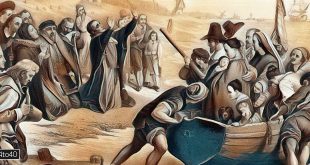 Efforts to ease the restrictions on the motor car culminated in an Act of Parliament which became effective on 14 November 1896. It laid down that ‘locomotives’ of less than three tons, unladen, were regarded as ‘light’ and were exempted from the need for an attendant to walk in front. At one time the attendant had to carry a red flag. The Act raised the speed limit to 19 km.p.h.
Efforts to ease the restrictions on the motor car culminated in an Act of Parliament which became effective on 14 November 1896. It laid down that ‘locomotives’ of less than three tons, unladen, were regarded as ‘light’ and were exempted from the need for an attendant to walk in front. At one time the attendant had to carry a red flag. The Act raised the speed limit to 19 km.p.h.
Those enthusiasts who had been pressing for reform of the laws governing motor cars then decided to celebrate by arranging a procession of ‘horseless carriage’ from London to Brighton on 14 November. This was the Emancipation Run. There were not many motors cars in Britain at that time, so some were brought over from France to join the procession. The day seems to have been marked by some chaos and confusion. There were thirty-three starters. Only ten were recorded officially as finishing. Among the entrants was a vehicle described as a steam bicycle. Some vehicles, it was said, did most or part of the journey by rail. The start of the Emancipation Run was marked by a ceremony at which the Earl of Winchilsea tore up a red flag.
Various mishaps marked the day – the bursting of an ‘unpuncturable’ tyre was one of them. Overheating was another. One driver, getting out of the way of a frightened horse, ran his car into a ditch. According to the official return the first man home covered the whole 90 km of the run in three hours forty-four minutes and thirty-five seconds.
 Kids Portal For Parents India Kids Network
Kids Portal For Parents India Kids Network






